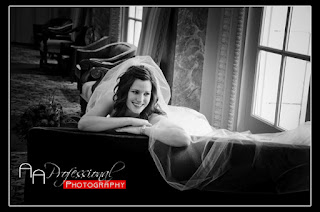The intent of this "column" was to write tips of photography, to those who enjoy this beautiful craft, "every day"... But after trying to find the right time to do it I started to get really frustrated because I never find the time; then I've come to the conclusion to relax a bit and write as soon as I can sit down, focus and write. So, from here on (as has been from the beginning), I will write this column as soon as my availability allows me.
For many, these TIPS are already known an even used, but for even greater audience, these tips are not known, not used or not relevant at all (That's why I see so many BAD photographs around... especially in the internet).
I agree that these (and all) the tips, rules and gadgets in photography (an in many instances in life) are NOT ALWAYS used or even needed; so I rely in your common sense to determine when do you want to use these tips and when you don't want to use them.
The TIP for today is : USE A TRIPOD!
As I mentioned before, The rules and tips in photography are not always used, but it is important for us to know them all (or as many as is possible for us to know).
I don't think I need to explain the benefits of using a Tripod, but for those that are entering into photography for the first time, let me tell you that it is important to stabilize the camera in order to get sharper images. This is a principle well known for many (almost ALL) who likes photography, but not applied as often as it should be.
There are 3 main reasons why Do you want to use a tripod for your photographs (perhaps, there are more situations that require the use of a tripod, but for the purpose being here today I'll explain these three reasons):
1.- Low light.
2.- Taking long exposure photographs.
3.- Using long lenses.
Other reasons that require the use of a tripod could be, but not limited to, the following:
4.- Macro photography
5.- Products and commercial photography
6.- Architectural photography
7.- Studio, etc. etc.
Let me explain the first three reasons, so you can start being more familiar with these:
1.- LOW LIGHT SITUATIONS: The digital camera sensors, as did the film in time of the past for many, have a limit of sensibility; in other words, they can sense the light up to a point, after which they will capture only darkness.
Most of the time, when you want to take a photograph in dark areas, like you in a restaurant with your family, or playing outside in a summer night, you use the flash from your camera, right? Well, there are situations that the flash light from your camera will not reach the area you want to photograph, or simply it is not the look you want to achieve, like this photo below I took when I was in the Sourthen region of Utah, close to the border of Arizona.
2.- LONG EXPOSURES: This situation is awfully similar to the one mentioned previously... as a matter of fact, all the people who likes night photography, knows that the most important element in their camera bag is their tripod!
This type of photography is LOW LIGHT SITUATIONS in STEROIDS!! This is for extreme low light situations, where the exposure surpass the 1 second limit... I am talking 20 seconds, 2 or 3 minutes, or even 3 or 4 hours!!
This is a 30 seconds photograph... obviously using my tripod. That's why is so sharp.
This photograph took about 5 seconds and it gives the effect of a curtain in the water fall. Not necessarily in low light situations, but when something is moving fast and you want to give the effect of even "faster" or a "dreamy" look, like this water fall.
3.- USING LONG LENSES: This is the least viewed by people who are not professionals in the matter, just because they don't usually own of these expensive lenses! But, most of the time, when we do wildlife photography and use one of these lenses, ranging normally between 300 mm and 500 mm (going to the extremes to 800 mm or even 1000 mm), they are REALLY heavy, and if we would hand hold them every shake will be magnified, and the result will be: a blurred photo!.
Beside these lenses being heavy to carry, they are mainly used in low light situations like early mornings (dawn) or during sunset (dusk), That is when wildlife is the most active.
Here is a sample photo, taking a close up of this mountain goat, using a REALLY long lens on top of my tripod.
REMEMBER!! : There are SO MANY situations where you will be tempted in not using (or taking) your tripod. You will be able to get away without the use of a tripod many times, BUT you are risking the integrity and perfectness of the photograph you want to take!
It's up to the situation you are in and How important is that photograph to you? If it's REALLY important and your light is low, THEN you Must use your tripod.
The professionals use a tripod... FOR A REASON!!
Learn to use it TOO !!!
Feel free to contact me or ask me questions about the TIP of the day or any other topic related to photography. I'll be happy to answer it and help you as much as I can.
Keep taking photographs!!!
AL Aguayo.





















































